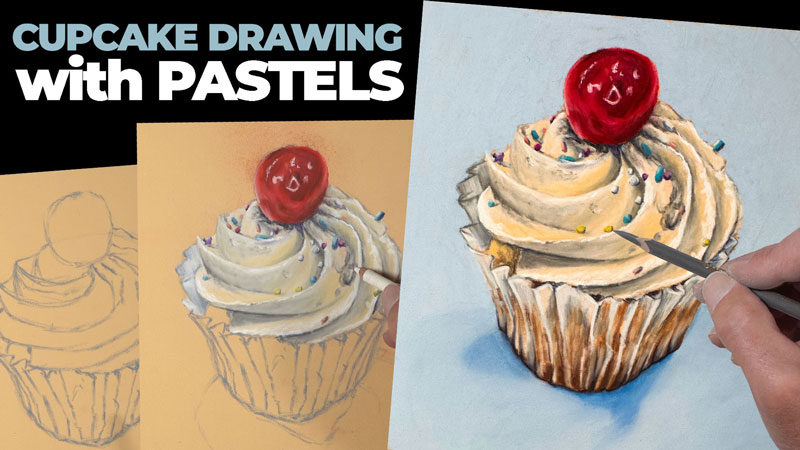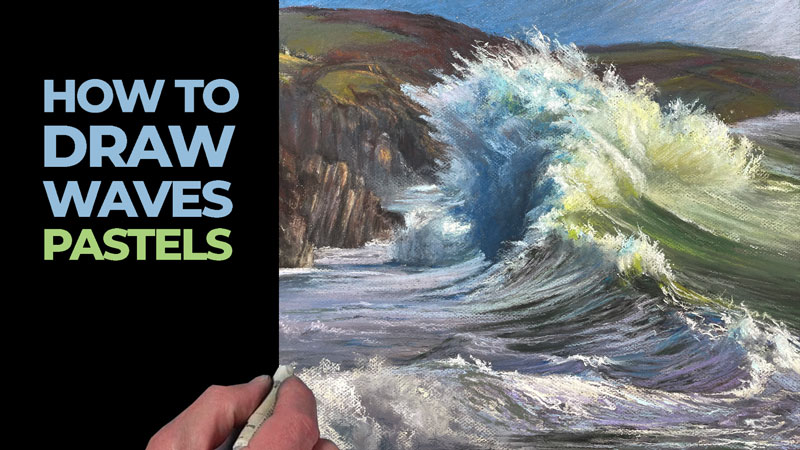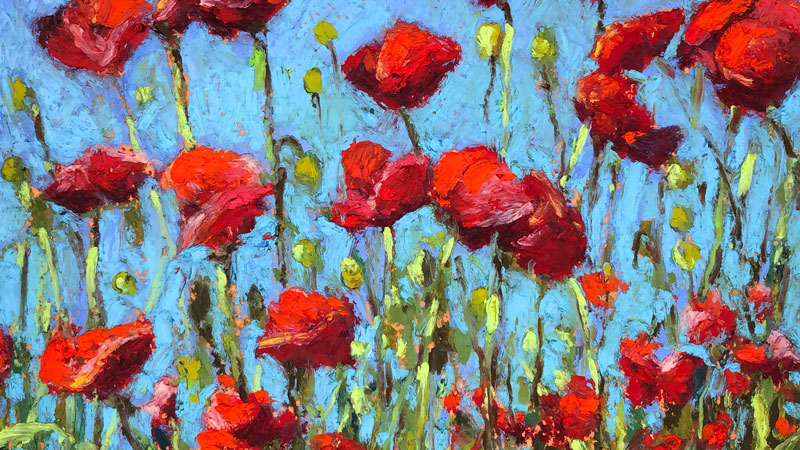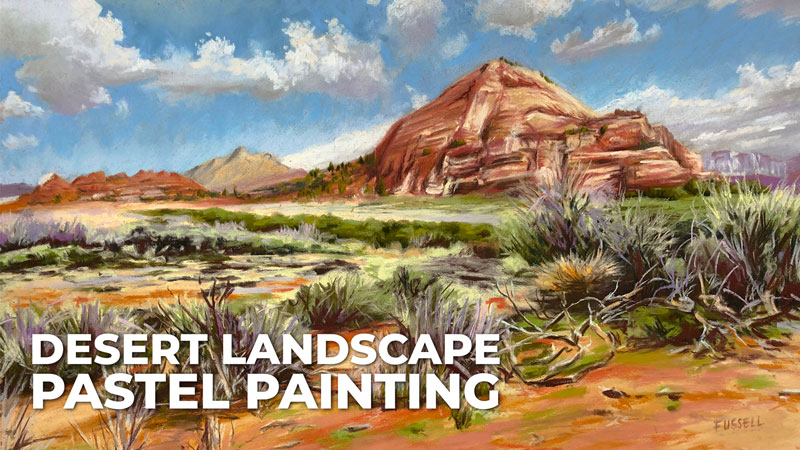What’s the Difference Between Oil Pastels and Soft Pastels?
Oil pastels and soft pastels are extremely different from one another. Even though both mediums are referred to as “pastels”, they are different mediums entirely. In this lesson, we’ll see just how different they are.
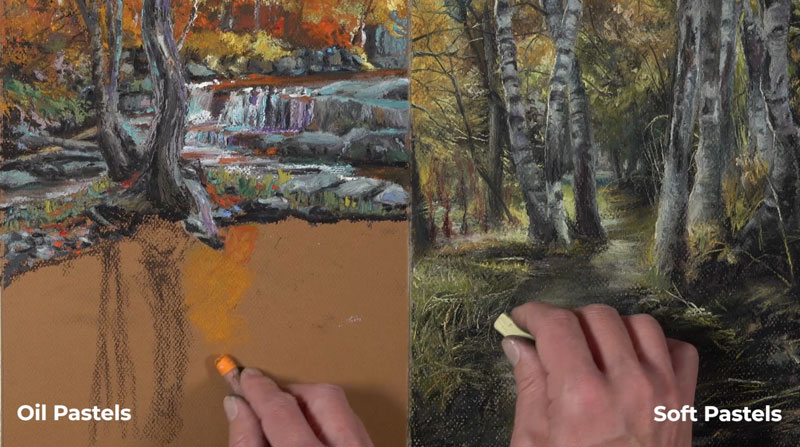
The Binder
To understand the differences between oil pastels and soft pastels, we need to start by taking a look at the compositional makeup of each material. That starts by taking a look at what’s called binder. Binder is the material that holds the pigment together. All colored art materials include pigment and binder. Pigment is what adds the color, and binder is what holds the color together.
Soft pastels feature a gum or methyl cellulose binder.
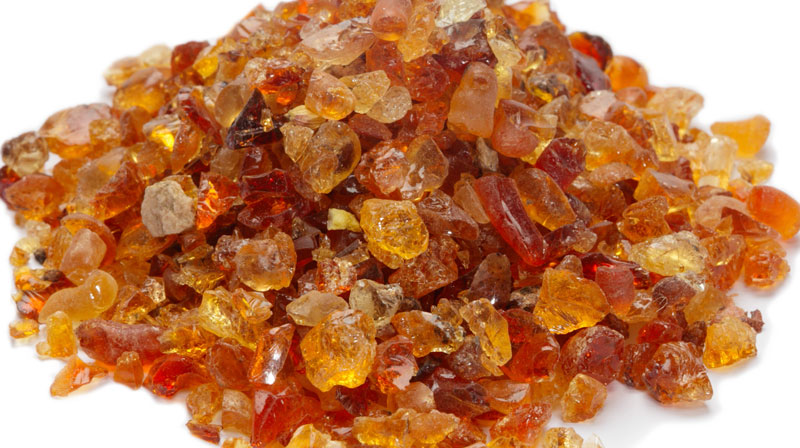
But oil pastels feature an oil and wax binder.
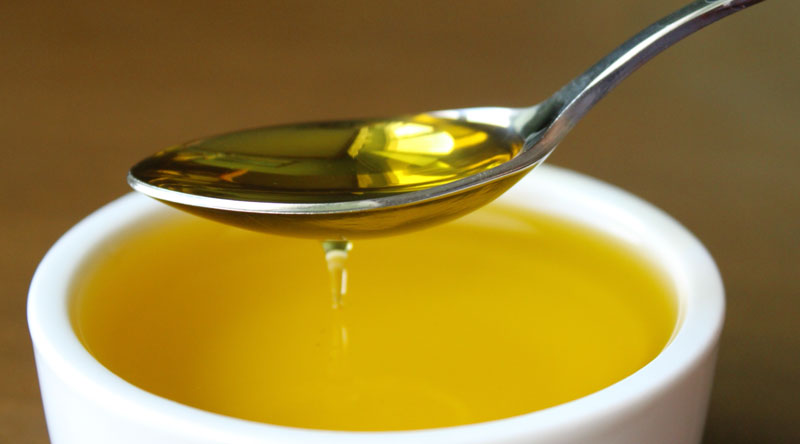
Because these two binders are extremely different from one another, the materials are going to behave differently on the surface. This means that we need to approach using them differently as well. Because of its binder, soft pastels are applied dry. They’re noticeably powdery and easily blended or smudged with a finger.
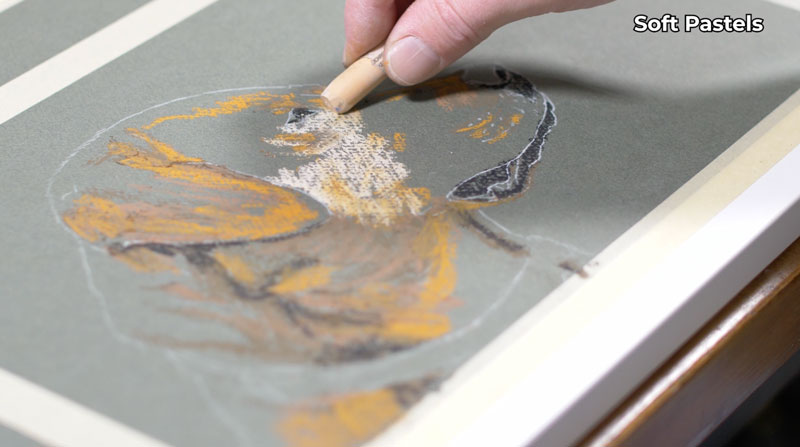
This differs from oil pastels, which are applied in more of a wet manner. Oil pastels never dry completely thanks to their binder. They’re a little bit more difficult to blend with a finger compared to soft pastels.
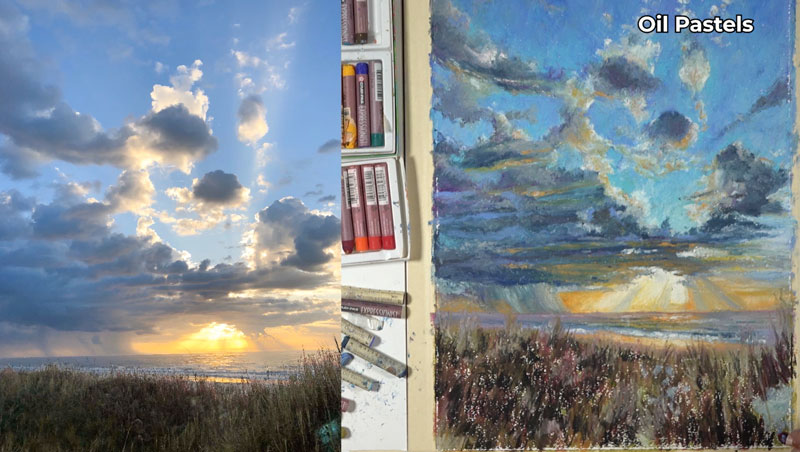
Surfaces for Pastels
Soft pastels are typically applied to textured papers. The textured surface, of course, allows for layered applications allowing you as the artist to fill in the tooth of the paper to build up complexity in the color. Oil pastels are most often applied to textured papers just like soft pastels, but oil pastels, because of their binder, can be applied to virtually any surface, including glass.
Oil Pastel and Soft Pastel Behavior
Typically, oil pastels are more intense in color compared to traditional soft pastels. Because of their similarities to crayons and colored pencils, oil pastels behave more like a crayon when they’re applied. You can see here that layering produces some mixing.
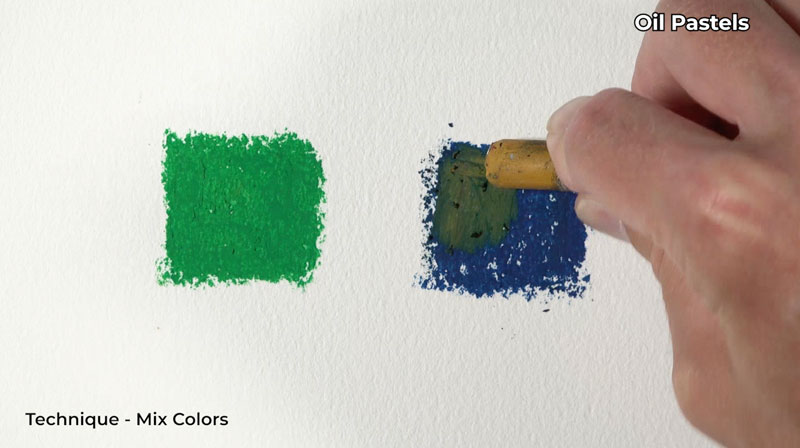
Soft pastels, however, are more like chalk. They’re powdery and loose, and easily blended with a finger or blending tool.
Oil pastels can also be blended, but typically we don’t use a finger to blend them. Oil pastels can be blended using a colorless blender, but you can also use painting mediums to blend the material as well. Mediums such as terpenoid or other oil painting mediums will also work for blending oil pastels.
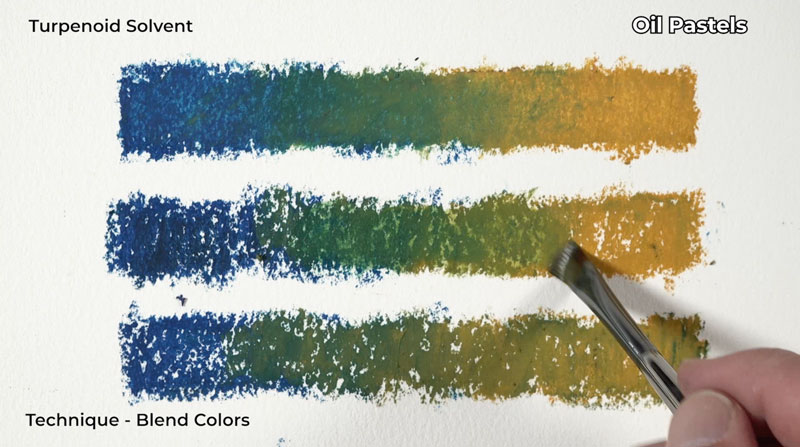
Techniques for Oil Pastels and Soft Pastels
Many of the same techniques used for soft pastels can be applied to oil pastels. For example, scumbling and feathering are two techniques used for both mediums.
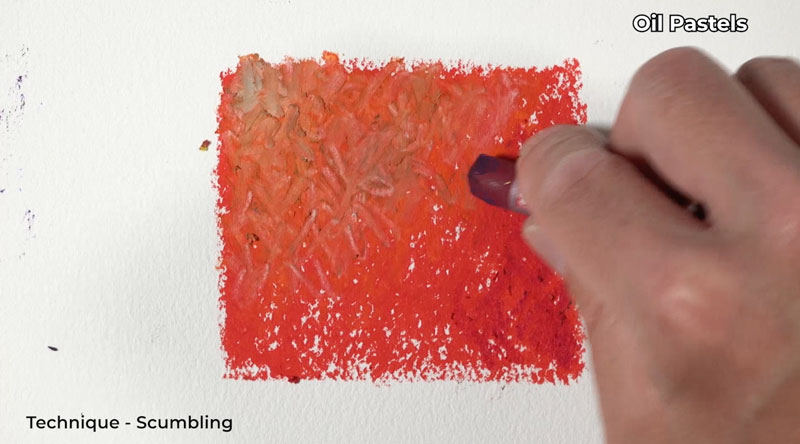
Oil pastels, however, can be scratched and removed from the surface. You can use this characteristic to create textures in the surface or remove oil pastel from the surface completely. Oil pastels can be applied in a thick manner imitating impasto oil painting techniques. Soft pastels, however, because of their dusty powdery nature remain fairly flat on the surface.
Because oil pastels are so sticky, you may notice some of the material sticking to other colors of pastels. Of course, when you apply this to the surface, you’ll see some contamination. So with oil pastels, it’s important to pay attention to the tip of your stick and make sure it’s clean before applying it to the surface. Soft pastels, however, don’t share this characteristic. You don’t really have to worry too much about contamination when you’re using soft pastels.
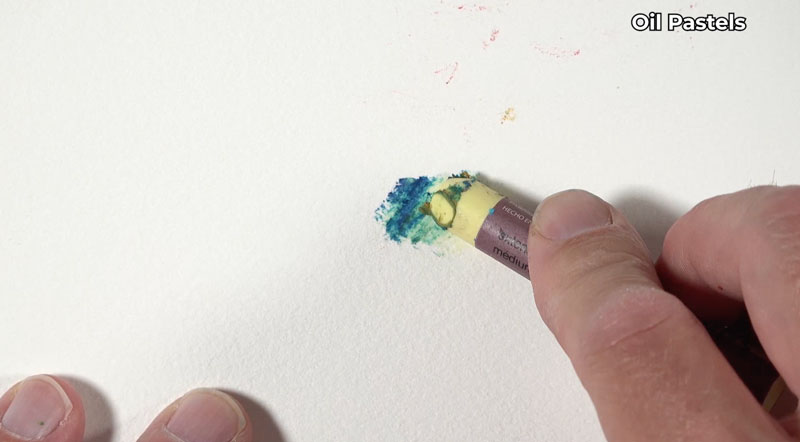
Soft pastels effortlessly cover over other applications, much like an opaque painting medium. As you can see here, I’m adding blue dots over the top of a darker blue and it’s easily visible with a very light touch.
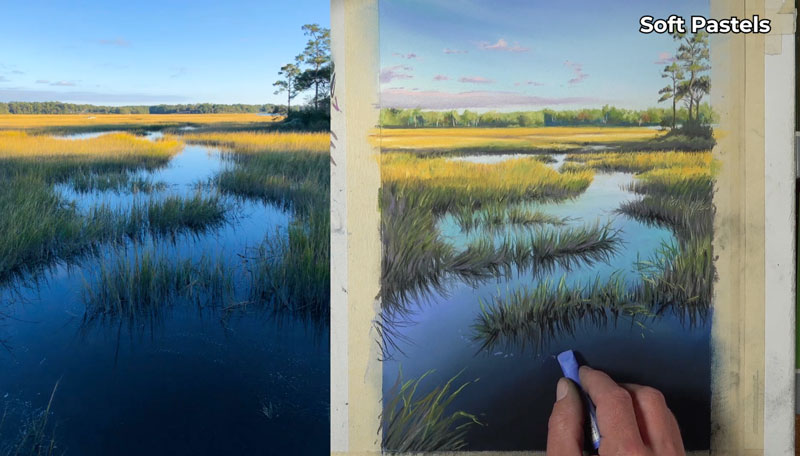
Oil Pastels vs. Soft Pastels – Conclusion
Both soft pastels and oil pastels are obviously capable of producing amazing results, which can look like a painting. But it’s important to note that even though both of these materials are called pastels, they’re typically not used in combination with one another. This of course goes back to the fact that their binders are so extremely different, making them completely different mediums.
If so, join over 36,000 others that receive our newsletter with new drawing and painting lessons. Plus, check out three of our course videos and ebooks for free.

